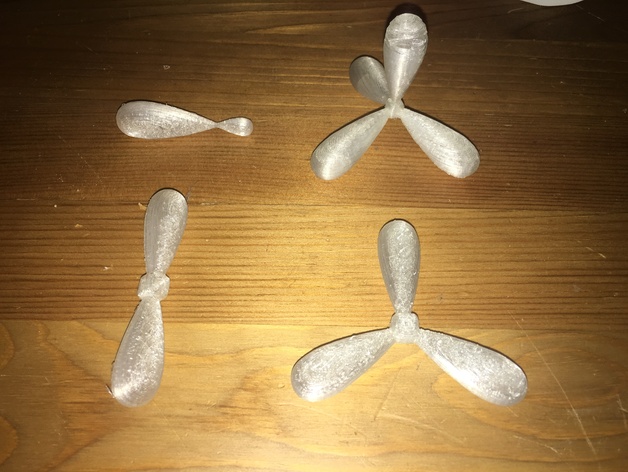
Hybridized Orbitals
thingiverse
This set of models includes hybridized orbitals based on BlendLabor's orbital shape. The collection contains four different types of sp hybridized orbitals: sp, sp2, and sp3 models, plus unhybridized p orbitals that can be attached to the sp and sp2 models to show how pi-bond orbital overlaps work. Note: This is a project still in progress, so some details are still being finalized. To correct bond angles for the sp3 model may take some additional adjustments. When assembling these pieces, we recommend using hot glue to attach the unhybridized orbitals to the models, as it makes them more stable for demonstrations. **Print Settings:** Printer: Da Vinci Jr. Rafts: Yes Supports: Yes Infill: 5-10% **Post-Printing:** After printing these hybrid orbital models, use hot glue to connect the unhybridized p orbitals to make them more stable for classroom demonstrations. Standards: NGSS CCSS CCSS **Overview and Background:** Molecules have three-dimensional shapes that play an important role in their function, particularly in biological systems. This set of models helps students visualize these shapes and understand the reasons they form based on hybridization and VSEPR theory. Through this project, students will be able to describe how orbitals combine when covalent bonds are formed. Students will be able to relate orbital arrangement to molecular shape. Students will be able to describe how orbital shapes connect with VSEPR theory. Students will understand the difference between pi and sigma bonds based on orbital overlap. **Preparation:** Before starting this project, students should have a basic understanding of atomic orbitals and valence shell electron repulsions (VSEPR) theory. They also need to be familiar with single, double, and triple covalent bonds. **Lesson Plan and Activity** Begin by explaining how s and p orbitals combine to form hybridized bonds, which aim to keep orbitals as far apart as possible. These orbital sets can be combined with the atomic model set for added understanding. Draw a molecule with a tetrahedral shape. Discuss how four orbital combinations point in correct directions to form a molecular shape that keeps the 109.5° apart distance between orbitals. Using the atomic orbital model, draw and describe the positions of s and p orbitals in relation to a tetrahedral shape. Combine four of these orbitals to form hybridized bonds which maintain the tetrahedral molecular shape. Use another sp3 hybridization to further explain how three-dimensional bond geometry forms. **Step Two:** Show how only three of the five basic hybrid orbitals form in a trigonal planar carbon molecule. Explain how they can hold onto 1 s orbital and two p orbitals by attaching unhybridized P-orbitals to the sp2 shape, indicating that a lone leftover P orbital can still be visualized through their use. Use this same procedure when showing double bonds within linear molecules and explaining sigma/pi differences using models. Next draw three different types of linear carbons each with two pi-bonds or only one, along side a sp hybridization to connect leftover orbitals so these combinations illustrate both lone pairs or the ability rotate double & triple bonds. Molecular models can also serve as reference when discussing rotation within molecular bonds in later classes.
With this file you will be able to print Hybridized Orbitals with your 3D printer. Click on the button and save the file on your computer to work, edit or customize your design. You can also find more 3D designs for printers on Hybridized Orbitals.
